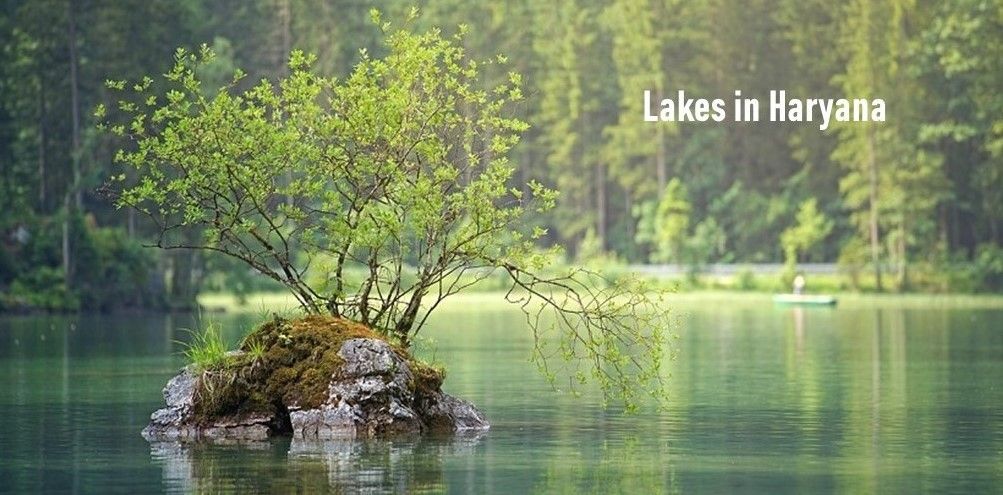
Nestled in the heart of northern India, Haryana is a state blessed with geographical diversity that extends far beyond its thriving industrial cities and fertile agricultural lands. From the foothills of the Shivaliks to the semi-arid zones of the southwest, the state is a living canvas of terrain, ecosystems, and water bodies. Among its many natural attractions, The Lakes of Haryana form serene enclaves that support ecological balance, preserve regional biodiversity, and serve as hubs for tourism and cultural heritage.
Ecological Importance of Lakes in Haryana
Lakes are not merely tranquil sights of beauty they act as critical ecosystems supporting a wide range of plant and animal life. In a state like Haryana, where rivers such as the Yamuna and Ghaggar provide the main water sources, lakes serve as supplemental aquatic environments, especially during dry months. They recharge groundwater, regulate microclimates, and offer sanctuaries to migratory birds, fish, and aquatic flora. In urban and semi-urban regions, these lakes act as green lungs, cooling nearby areas and providing residents with vital recreational spaces.
Damdama Lake: A Birdwatcher's Paradise
Located in the Gurugram district near the Aravalli foothills, Damdama Lake spans roughly 12.14 square kilometers and is one of the largest natural lakes in Haryana. Formed by monsoon rains pooling in natural troughs, the lake becomes especially vibrant during the rainy season.
More than 190 species of birds including cranes, cormorants, and kingfishers thrive here, making it a favourite among ornithologists and wildlife photographers. Boating, rock climbing, and nature walks are popular with tourists, offering a perfect blend of adventure and serenity. The surrounding Aravalli hills enhance the scenic appeal, contributing to both ecological richness and tourism revenue.
Blue Bird Lake: Tranquil Waters in Hisar
Sprawled across 20 acres, Blue Bird Lake in Hisar is a relatively lesser-known yet immensely charming wetland. Adorned with small islands and native vegetation, it supports an array of birds and aquatic life. As a designated site for regulated fishing and boating, it offers leisure activities while maintaining ecological safeguards.
Managed by the Haryana Tourism Corporation, this lake has been developed with the intent to balance recreational amenities and environmental conservation. Picnickers and nature lovers find the lake’s clean air and calm water immensely soothing, especially during winter months when migratory birds flock in large numbers.
Tilyar Lake: Urban Oasis of Rohtak
Conveniently located near Rohtak, about 70 kilometers from Delhi Tilyar Lake is a model of eco-tourism blended with public infrastructure. Encompassing an area of around 0.53 square kilometers, this lake is part of a well-maintained complex that includes Tilyar Zoo, children’s parks, and food courts.
An artificial island at the lake’s center serves as a nesting ground for several avian species. Eco-friendly paddle boats are available for rent, enabling visitors to experience the lake’s quiet splendour firsthand. With its proximity to major highways, Tilyar Lake serves as a weekend retreat for city dwellers looking for a quick escape into nature.
Badkhal Lake: Lost Glory of Faridabad
Once a thriving tourist destination surrounded by the picturesque Aravalli hills, Badkhal Lake near Faridabad is now a story of environmental decline. Spanning approximately 206 acres, this man-made embankment was originally filled by seasonal rainwater. However, unchecked mining activities in the adjacent areas led to ecological degradation, disrupting the water flow and drying up the lake.
Despite its desiccation, efforts have been initiated in recent years to rejuvenate the ecosystem. Landscape restoration and afforestation drives are bringing hope that Badkhal Lake may once again emerge as a natural retreat and ecological haven.
Karna Lake: A Pool of Myth and Mystery
Situated in the historic town of Karnal, Karna Lake is steeped in mythology and cultural memory. Legend has it that the epic hero Karna, from the Mahabharata, once bathed in this lake and gave away his divine armor to Indra, symbolizing immense sacrifice and valor.
The lake’s tranquil waters and lush surroundings make it an ideal stop for travelers on the Delhi-Ambala highway. Its facilities include guest houses, eateries, and landscaped gardens. Beyond recreation, Karna Lake stands as a testament to Haryana’s fusion of mythology, history, and nature a unique draw for spiritual tourism and heritage enthusiasts.
Lakes as Engines of Sustainable Tourism
The tourism potential of lakes in Haryana is immense, but it must be harnessed with an eye on sustainability. Infrastructure development around lakes should prioritize biodiversity preservation and waste management. Eco-tourism can bring in revenue, create jobs, and support conservation initiatives simultaneously. Local communities should be included in these efforts so that economic gains are equitably distributed.
Educational tourism could also be promoted by turning lake complexes into learning centers about wetland ecology, bird species, and water conservation. Guided nature walks, birdwatching tours, and awareness campaigns can deepen public engagement and foster environmental stewardship.
Conclusion
Lakes in Haryana though scattered and varied in condition form a vibrant tapestry of nature, culture, and Ecological significance. From Damdama’s avian marvels to Karna Lake’s mythical roots, each water body tells a story waiting to be discovered. As India continues to grow and urbanize, safeguarding these natural reservoirs becomes not just an environmental duty but a cultural imperative. In cherishing and preserving these lakes, Haryana strengthens its bond with both nature and its rich heritage.